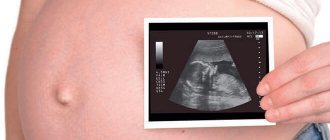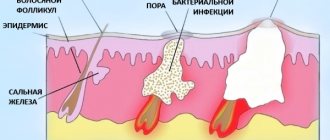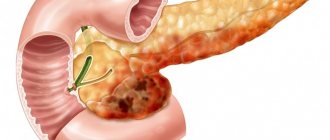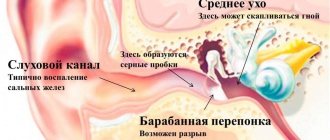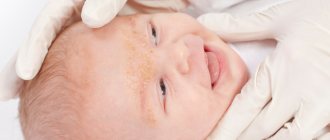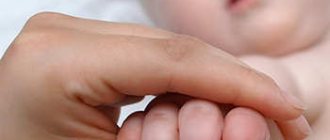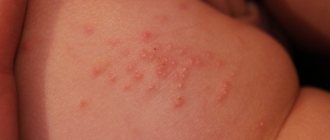Definition and classification
Nervous tics are muscle contractions of a pathological nature that occur occasionally or regularly. In children, as a rule, it has a paroxysmal type. An exacerbation of the condition is most often observed in the presence of an unpleasant or dangerous situation.
There are local as well as generalized nervous tics. The first are contractions of single muscle groups, the second - several.
There are:
- vocal;
- facial tics;
- motor.
According to duration they are distinguished:
- transistor - last less than a year, can disappear on their own and then appear again;
- chronic - characterized by long-term presence, more than a year.
Differential diagnosis
It is necessary to carry out differential diagnosis between such types of tics as Gilles de La Tourette syndrome , nervous tics, myoclonus (myoclonus), orofacial dyskinesia, ballism, athetosis, blepharospasm, chorea, Parkinson's disease, tremor, rigidity, dystonia, hyperkinesia (dyskinesia), epilepsy , Hallervorden-Spatz disease, schizophrenia, torsion dystonia, paroxysmal dyskinesia, obsessive-compulsive disorder (OCD), neuroacancytosis, restless legs syndrome.
Nature of occurrence
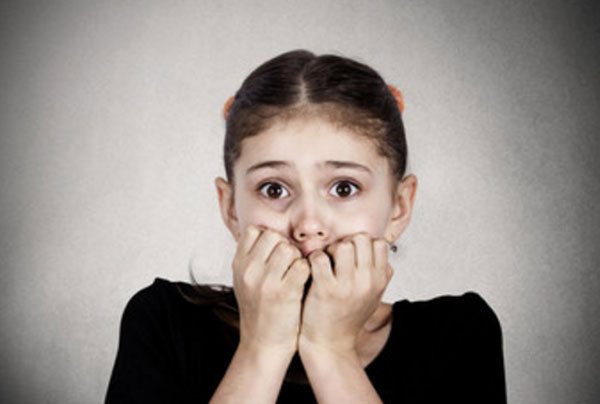
The reasons why a nervous tic can develop are most often the following:
- hereditary predisposition;
- lack of attention from parents or their overprotection;
- early infectious disease, especially influenza, intoxication of the body;
- dysmetabolic or organic lesions in the brain, excess production of dopamine;
- turbulent environment - situations when the baby cannot feel protected in a team or in the family, experiences excessive nervousness, which subsequently results in the appearance of tics;
- excessive mental stress, excessive demands placed on the child regarding studies or sports achievements;
- improper diet - a situation when there is a lack of vitamins and microelements in the baby’s body, in particular magnesium or calcium;
- excessive consumption of drinks that have a stimulating effect on the nervous system (coffee, strong black tea);
- severe stress - this can be constant domestic scandals, parental divorce, the presence of an alcoholic in the family, the death of a relative or friend, sexual or physical violence.
Why do tic hyperkinesis occur?
- Adverse effects on the fetus during pregnancy (colds in the mother, early and late toxicosis), various complications during childbirth
- Presence of a hereditary predisposition (diseases of the nervous system, including tics and stuttering in parents)
- Organic diseases of the brain (bacterial and viral encephalitis, meningitis, various head injuries, somatogenic and drug intoxications, poisoning) suffered at an early age
- Repeated psychotraumatic situations (in the family, kindergarten, on the street), leading to increased excitability of the child, development of fearfulness, anxiety, and lack of self-confidence
- Often the trigger for the appearance of tics in children are colds and childhood infectious diseases (measles, rubella, chicken pox, etc.), which are accompanied by a long-term inflammatory process in the nasopharynx, larynx (runny nose, sore throat, dry cough), eye damage (conjunctivitis)
- Schoolchildren are adversely affected by academic overload, long hours of sitting in front of a computer or smartphone screen, and low physical activity.
Often, for the first time, a tic occurs as if by accident (twitching the head when a tight collar is squeezing the neck, licking dry lips, blinking due to conjunctivitis or a speck of debris in the eye). But these movements quickly become fixed as a conditioned reflex and are subsequently repeated without any external stimulus. In children, tic hyperkinesis can arise and become established as a result of imitation.
Characteristic manifestations

Mimic tic
There are certain symptoms that may indicate the presence of a tic. The main distinguishing feature is the absence of manifestations at night.
Signs of facial tics include:
- change in the lumen of the nostrils;
- wrinkling of the nose, which is unnatural;
- tension of the nasal wings;
- closing and opening the mouth;
- twitching of lips, cheeks;
- “twitching eye”, constant blinking, squinting;
- chin trembling;
- moving eyebrows;
- circular eye movements.
Vocals include:
- frequent smacking, sniffling, muttering;
- pronunciation of certain sounds;
- uncontrollable need for obscene, cynical language, pronunciation of curses;
- constant repetition of words heard earlier from other people;
- the child’s need to repeat phrases or individual words over and over again, with an increase in the speed of pronunciation and a change in voice intonation;
- There may be unintelligibility of what is spoken.
The presence of motor tics is indicated by the following signs:
- obscene gestures;
- sudden shuddering;
- recalculation of certain objects;
- indecent acts;
- constant touching of certain parts of the body;
- inattention;
- fussiness;
- excessive impatience;
- special attention to personal hygiene;
- arranging objects in a certain sequence;
- inability to finish what is started;
- lack of perseverance;
- excessive noise.
Diagnostics

Before thinking about how to treat a child who often has tics, it is necessary to determine the correct diagnosis.
- First of all, you need to seek advice from a pediatrician, who can refer you to a neurologist. Most often, a visit to a specialist is required if the following points exist:
- increased intensity;
- the negative impact of this condition on problems with adaptation in a new team;
- negative impact on the baby’s quality of life;
- tic persistence for more than four weeks;
- the appearance of several ticks at the same time.
- The neurologist will examine the child, check for reflexes, and find out what the complaints are. After which he will be able to refer you for additional examination:
- general blood test - to rule out infection;
- stool analysis for helminthic infestations, since parasites can affect the occurrence of involuntary movements;
- ionogram - to identify the level of microelements;
- MRI of the head, electroencephalography - to exclude complications after injury, identify neoplasms, serious pathologies of the nervous system.
- If a specialist suspects problems of a psychological nature, the child will be referred to a psychologist or psychotherapist.
Nervous tic in a child
Answered by Ryltsov A. Yu.
This is most likely a tic disorder.
• In the vast majority of cases, childhood tics do not require pharmacological treatment, and the tic disorder resolves spontaneously.
• First of all, it is necessary to interpret the problem at a face-to-face appointment with a child neurologist and psychiatrist. Tourette's syndrome must be excluded.
• Then, most likely, psychological and pedagogical measures planned by a child psychotherapist-psychiatrist and/or psychologist will be sufficient.
Read about ticks here . If domestic sources are not enough, I can offer imported ones. the Current Management in Child Neurology manual says about tics :
My translation:
Tic disorders. Tics are sudden, short, involuntary movements or sounds that occur in a series of repeated episodes. Tics are a relatively common paroxysmal non-epileptic disorder that comes to the attention of pediatric neurologists. Although the origin of tics is still being studied, autosomal dominant inheritance has been suggested in large pedigrees where relatives have simple tics, complex motor tics, or Tourette's syndrome.
The clinical spectrum of tic disorders includes the more common and benign transient tic disorder, and the more rare chronic (eg, daily tics for more than a year), motor or vocal tics, Tourette's syndrome. In children, the most common motor tics are: facial, neck, and shoulder tics; Breathing tics, consisting of short snorting or snorting sounds, may also be diagnosed. Vocal tics typically consist of short sounds (eg, squeaks), utterances, echolalia, or, less commonly, coprolalia. Children may voluntarily suppress tics, leading to the feeling that they are voluntary or “in their heads.” However, suppression of tics will lead to an internal need to realize them, with subsequent relief after the execution of the tic.
Benign transient tics may manifest as simple motor tics, which can be quite variable, giving the appearance of “migratory” tics. Their relatively sudden appearance often leads to an emergency consultation with a pediatric neurologist due to suspected epilepsy.
Treatment consists, first of all, of educating the patient/parents and the difficult method of treatment with a “potion from time”, because
Transient tics (by definition) resolve within a few months. There are drugs that have shown some effectiveness for tics, such as pimozide and haloperidol, however, pharmacological intervention should be reserved for severe, disabling tics. All answers
Treatment

Let's figure out what to do if you suspect your child has a nervous tic.
First of all, care must be taken to identify the factors that influenced the development of this condition. If the tic is not burdened by any complications, then the essence of treatment, depending on the causes, boils down to the following:
- psychological support for the child’s immediate environment, establishing contact with the baby, building trust, providing increased attention if there was previously a lack of attention;
- procedures to calm the nervous system: relaxing baths with the addition of essential oils, massage;
- soothing infusions can be used, for example, with valerian root or mint;
- it is important to provide the child with nutritious nutrition, enriched with everything necessary for a growing body;
- strengthening children's immunity;
- normalization of intellectual loads;
- relaxation of the daily routine, correct calculation of time for rest and active activity;
- if the situation around the child provokes the occurrence of tics, it needs to be changed;
- provide the baby with tactile contact, kiss, hug him;
- If you can’t cope with the problem on your own, seek help from a psychologist. A specialist will help you determine the reasons that influenced the occurrence of tics and their treatment.
The doctor may also prescribe drug therapy. It may include:
- the use of sedatives to improve sleep, reduce anxiety, and normalize the functioning of the nervous system (Novopassit, Valerian extract);
- nootropics - improve cerebral circulation, strengthen the nervous system, increase stress resistance (Phenibut);
- antipsychotics - reduce the manifestation of phobias, relieve tension (Sonapax);
- tranquilizers - prescribed in especially severe cases to reduce anxiety, get rid of manifestations of phobias, to have a beneficial effect on sleep, relieve muscle tension (Relanium, Diazepam);
- If there is a deficiency of Magnesium or Calcium in the body, it is necessary to replenish these elements either with the help of a specialized diet or by taking medications, in particular Magnesium B6, calcium gluconate.
Precautionary measures

To reduce the risk of tics in your baby, you need to take the following steps.
- Timely notice that something is bothering the child and discuss his problems with him.
- If you are going to change your usual environment, be especially attentive to your child, monitor his behavior, and support him.
- If any repetitive movements or twitching occur, there is no need to concentrate the child’s attention on it.
- Provide your baby with a proper daily routine. Make sure that your daily routine includes various types of activity: intellectual, physical, as well as rest.
- Limit sitting in front of the computer and TV.
- Provide your child with a balanced diet.
- Minimize the impact of stressful situations, do not swear in the presence of the baby.
- Ensure you have healthy sleep.
- Spend enough time outdoors.
- Strengthen your child's immunity. Remember about the hardening option.
Now you know that blinking your eyes can indicate the presence of a nervous tic. If you notice a similar manifestation in your baby, it is better to consult a doctor; you may need his help. You shouldn’t close your eyes to what’s happening and hope that everything will go away on its own. It is very important to notice the problem in time, identify the cause of its occurrence and begin the necessary treatment.
